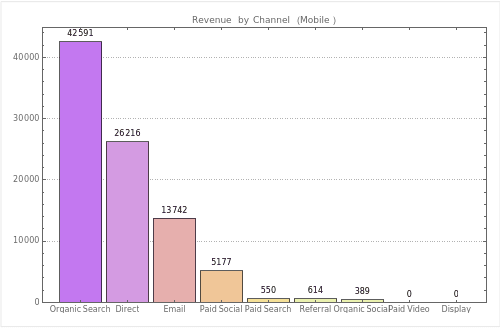This article was created from the video and transcript recorded during the live session in MeasureCamp Warsaw on Saturday, October 14, 2023 – with the help of Chat GPT4.
The digital landscape is evolving fast, and as professionals in the field, we must adapt and leverage the latest technologies to stay ahead. One such groundbreaking technology is the GPT-4, an innovative and interesting AI model. At the recent MeasureCamp Warsaw event, I had the privilege of demonstrating its capabilities in the realm of digital analytics. Here’s a comprehensive look into our exploration.
1. The GPT-4 Revolution in Data Analysis
GPT-4, with its advanced language processing capabilities, offers a new frontier in data analysis. By integrating it with plugins like Wolfram or using the Advanced Analytics features, we can run and automate complex calculations, generate insights, and even visualize data in real-time. The potential for instantaneous data interpretation can significantly reduce the time analysts spend on manual calculations and report generation.
2. A Real-World case: Valo Hotel & Work in Helsinki
To showcase GPT-4’s prowess, I presented a unique case of a Valo Hotel & Work in Helsinki. This establishment has the innovative ability to transform its rooms from offices during the day to hotel rooms at night. Using the Google Analytics 4 data from the hotel’s website, we embarked on a journey to interpret user behavior with different devices, channel performance, and revenue streams. With the right kind of prompting Chat GPT-4 can guide how to do the analysis and quickly calculate right kind of KPIs.

3. Visualizing Data with GPT-4
One of GPT-4’s standout features is its ability to generate data visualizations on command. Whether it’s a bar chart comparing revenue by channels or a detailed breakdown by device type, the AI can produce these visual aids in seconds. This capability can reduce a lot of the working time on how we present and interpret data, making insights available faster and more understandable.

4. Comparative Analysis: Paid Search vs. Paid Social
Using our data, we delved into a comparative analysis of two major digital marketing channels: paid search and paid social. GPT-4 effortlessly calculated metrics like cost per acquisition (CPAI and return on ad spend (ROAS), providing a clear picture of each channel’s performance. Such instant analyses can empower businesses to make informed decisions swiftly.
5. The Challenges Ahead
While GPT-4 is undeniably powerful, it’s essential to acknowledge its current limitations. During our demonstration, we encountered instances where the plugin wasn’t able to access data from open Google Sheet and AI produced “hallucinations” or errors in its outputs. As with any tool, human oversight remains crucial. Analysts should double-check AI-generated insights to ensure accuracy and relevance. Still, AI will save lots of time, especially when you are producing written analysis and recommendations.
6. The Future of Digital Analytics with AI
The integration of AI into platforms like Google Analytics 4 or any other web analytics system, could redefine digital analytics. Imagine a future where, instead of sifting through vast datasets, we simply ask our (web) analytics tool for insights, and it delivers comprehensive reports, complete with visualizations and recommendations. The time saved could be redirected towards strategic planning and implementation, amplifying the impact of our efforts.
Conclusion
The fusion of AI and digital analytics holds immense promise. As we witnessed at MeasureCamp Warsaw, tools like GPT-4 are not just theoretical concepts but practical solutions that can transform how we work. While they may not replace human analysts, they undoubtedly complement our skills, making the analytical process more efficient and insightful.
As we continue to navigate this exciting digital era, embracing and integrating such technological advancements will be key to staying ahead of the curve and delivering unparalleled value in our analyses.
